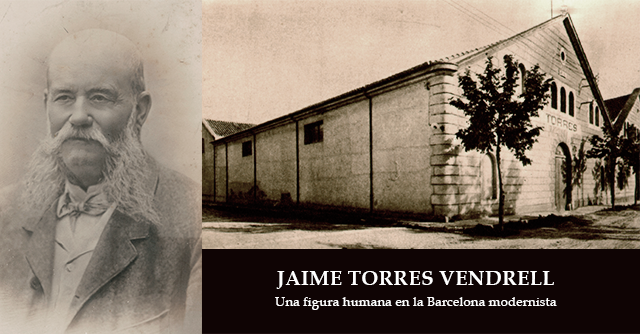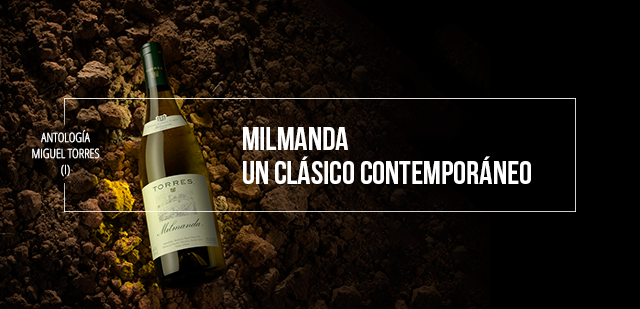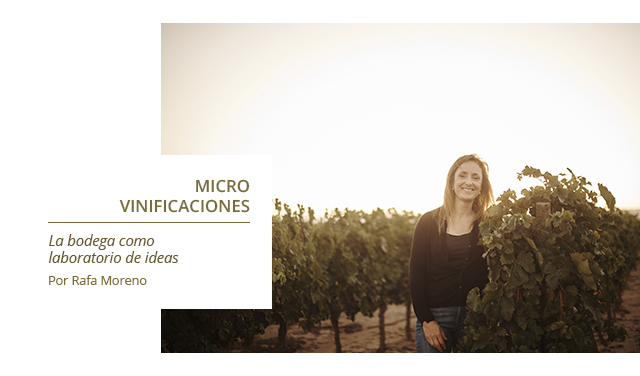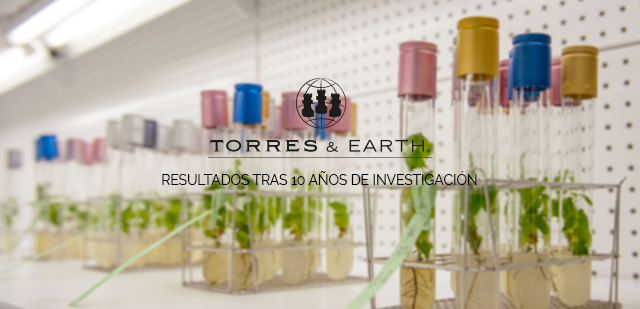JAIME TORRES VENDRELL

Jaime Torres Vendrell, the founder of Bodegas Torres, was a bold hard-working businessman: an example of the individuals who shaped Modernista-era Catalonia.
Jaime Torres was born in 1839 at a farm in Olèrdola (Barcelona) into a family of winegrowers. Raised in the shadow of his brother Miguel, Jaime was a rebellious and independent boy who dreamed of becoming a man of the world. This humanist sentiment forever marked his life and legacy. When his family bought him a ticket to Barcelona—his “first treasure”—he was able to pay for the “second part of his education.” Barcelona was an exciting city. It wasn’t, however, the boy's destination. He had decided to emigrate to Cuba and signed up as a kitchen hand on a ship. After several stopovers, calm seas and storms, Torres finally arrived in Havana where he began working as a shop clerk in a general food store.
Endowed with an extraordinary thirst for knowledge—he read everything he could get his hands on—and driven by big dreams, Jaime eventually became an Indiano (the nickname given to Spanish emigrants who returned to Spain after having made a fortune in the Americas). Despite his melancholic and serious demeanor, at heart he was still the dreamy cabin boy who had read the adventures of Dumas and the story of the hard-working middle classes in Balzac's The Human Comedy. Reading newspaper articles, he became convinced that oil was the business of the future. Like many other geniuses and visionaries, he remained incredibly guileless. Young Jaime decided that the best thing to do was write to a powerful North American oil company, which ended up granting him a distribution concession in Havana.
Even after becoming an important businessman, Jaime never forgot his humble beginnings. The immigrant experience had taught him a great deal, and hospitality was almost a religion for him. Whenever he received news from his family, he was overcome by homesickness, recalling the family vineyards and dreaming of once again toasting with a wine from his homeland. He became obsessed with the idea of importing wines. However, he realized that the unpredictability of the harvests, the long sea voyages, and the time spent in storage on the docks and in tanks put the quality and market guarantee at risk. He had earned thousands of pesos over the course of five years. Amid global political instability, he decided it was time to cash in his capital and return to Barcelona to make his dream come true
The student becomes the teacher
Jaime Torres returned to Barcelona in 1870. He settled into the mezzanine of a building he owned on what was then the Paseo de la Aduana. He immediately set up Torres y Compañía in Vilafranca, forming a partnership with his brother Miguel. They made a perfect team. In three years, they built the large warehouses and underground wine cellars on Calle Comercio in Vilafranca, which soon became famous for being able to store 120,000 hectoliters in vats, tanks, barrels and casks.
Jaime's business model was revolutionary for its time. His experience had taught him that many of the region's small-scale coopers were genius craftspeople, but often could not afford the finest wood. So Bodegas Torres provided its coopers with the oak and iron hoops to make the barrels.
However, he was still plagued by the same basic problem as back in Cuba: they needed ships and resources to guarantee delivery times and the quality of the wines. He reached out to the Antonio López shipping line to see if they could transport his wines to America. Realizing that the company was not interested in the deal, Jaime played a decisive hand, one he'd thought about for years: he chartered a boat in the port of Barcelona and exported his wines to Cuba on his own. It was an immediate success, and the punctual delivery and quality of the wines was received enthusiastically overseas. To transport the wines to Barcelona, Torres used a train that departed right outside the winery, which had been strategically built across from the railway station in Vilafranca. Shipments were so punctual that people could calculate a ship's departure based on when they saw the “Torres train” go by.
The quiet melancholic high-achiever
During the exuberant rush of the World Fair in 1888, Jaime Torres decided to venture into the newspaper business. He felt that groups he did not see eye to eye with were manipulating public opinion on economic matters. The hostile journalists included José María Serrate, editor of the Diario Mercantil. So Torres founded the Diario del Comercio and hired Serrate as its editor, making him the advocate for his liberal revitalization projects. Jaime had learned how to take risks, always calculating his ability to withstand them. This is what he did, for example, when he made a significant investment in North American cotton and, finding himself in the midst of a crisis, responded by buying a spinning factory in Malgrat and a textile factory in Sant Martí de Provençals. Something similar happened when he decided to invest in carbide. His success, once again, came from knowing how to go it alone.
Torres wines soon achieved international recognition and were exported all over the world, winning their first awards at competitions in Vienna (1873), Philadelphia (1876), Paris (1878) and Barcelona (1888). The family-owned company no longer had one ship to transport its wines, but an entire fleet. Despite his advancing years, Jaime stayed on top of his business, overseeing operations at his textile companies and reviewing the voyages of his ships.
When the Spanish-American War ended in Cuba in 1898, he felt a deep sadness at the distance that separated him from a land he had grown to love. He was awarded the Grand Cross of Isabella the Catholic, but he wasn't one for medals. Barcelona had become a big prosperous city. Jaime would go down to the harbor, as though he were about to head out to sea again. He had become an expert in how to live, but now he had to learn how to say goodbye.
He died in 1904. His widow, Adanta Boada, commissioned Rafael Atché, a sculptor famous for designing the Columbus monument, to build his mausoleum in Montjuïc Cemetery. Jaime Torres, a Catalan businessman born in the age of steel, built his life on the ideals of industry, trade, work and progress. But his greatest achievement was to witness a shift in eras, from the Reinaxença to Modernisme, from “heavy shapes” to “shapes that fly.”



